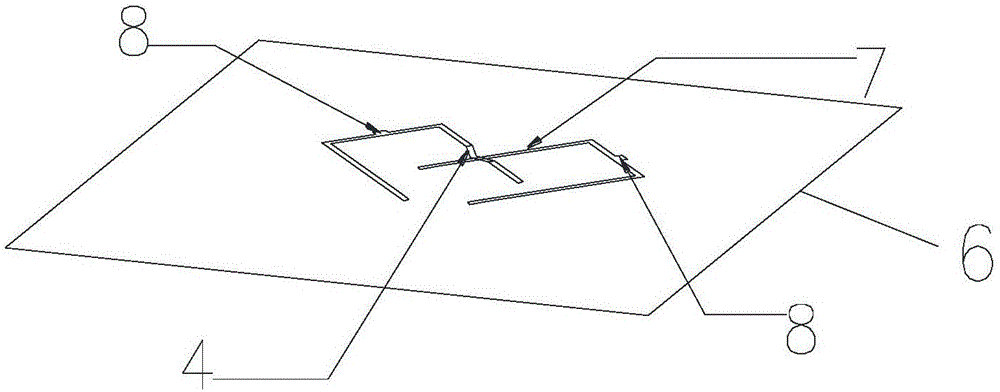Dual-polarization dielectric resonator antenna unit and base station antenna
A dielectric resonator and antenna unit technology, applied in the field of mobile communication, can solve the problems of difficult feeding structure, low gain, and narrow working frequency band of the dielectric resonator unit, and achieve high gain, reduced section height, and simplified feeding structure Effect
- Summary
- Abstract
- Description
- Claims
- Application Information
AI Technical Summary
Problems solved by technology
Method used
Image
Examples
Embodiment 1
[0043] Please combine figure 1 , figure 2 , image 3 and Figure 4 , the dual-polarized dielectric resonator antenna unit 100 of the present invention (for convenience of description, hereinafter referred to as "antenna unit 100") includes a substrate 6, a dielectric resonator 3 and a director 1 sequentially connected from bottom to top.
[0044] The substrate 6 is preferably a PCB (Printed Circuit Board, printed circuit board) substrate, its upper surface is provided with a ground plane, and the slit 5 corresponding to the two polarizations is etched in the ground plane; the lower surface of the substrate 6 A microstrip feeder 7 matching the slot is etched for connecting with an external feeding network (not shown) to feed the antenna unit 100 .
[0045] The dielectric resonator 3 is fixed on the upper surface of the substrate 6 and covers the gap.
[0046] The director 1 is fixed above the dielectric resonator 3 , and its projection on the substrate 6 covers the gap 5 ....
Embodiment 2
[0066] Please combine Figure 5 and Figure 6 , Embodiment 2 is similar to Embodiment 1, the difference is that another kind of slit 5 and a matching microstrip feeder 7 are provided on the substrate 6 .
[0067] The slit 5 includes first, second, third and fourth slits that are symmetrical to the center and perpendicular to each other between every two adjacent slits, and the first, second, third and fourth slits are connected to The distances between the centers of symmetry are equal, that is, the four slits are in a rotationally symmetrical relationship. The first, second, third, and fourth slits are preferably the same H-shaped slit, and the equivalent length of each H-shaped slit is the equivalent half-wavelength corresponding to the low-frequency center frequency to be designed, that is where λ 1 is the wavelength corresponding to the low-frequency central frequency of the desired design frequency band, and ε is the relative permittivity of the dielectric resonator 3...
PUM
 Login to View More
Login to View More Abstract
Description
Claims
Application Information
 Login to View More
Login to View More - Generate Ideas
- Intellectual Property
- Life Sciences
- Materials
- Tech Scout
- Unparalleled Data Quality
- Higher Quality Content
- 60% Fewer Hallucinations
Browse by: Latest US Patents, China's latest patents, Technical Efficacy Thesaurus, Application Domain, Technology Topic, Popular Technical Reports.
© 2025 PatSnap. All rights reserved.Legal|Privacy policy|Modern Slavery Act Transparency Statement|Sitemap|About US| Contact US: help@patsnap.com



